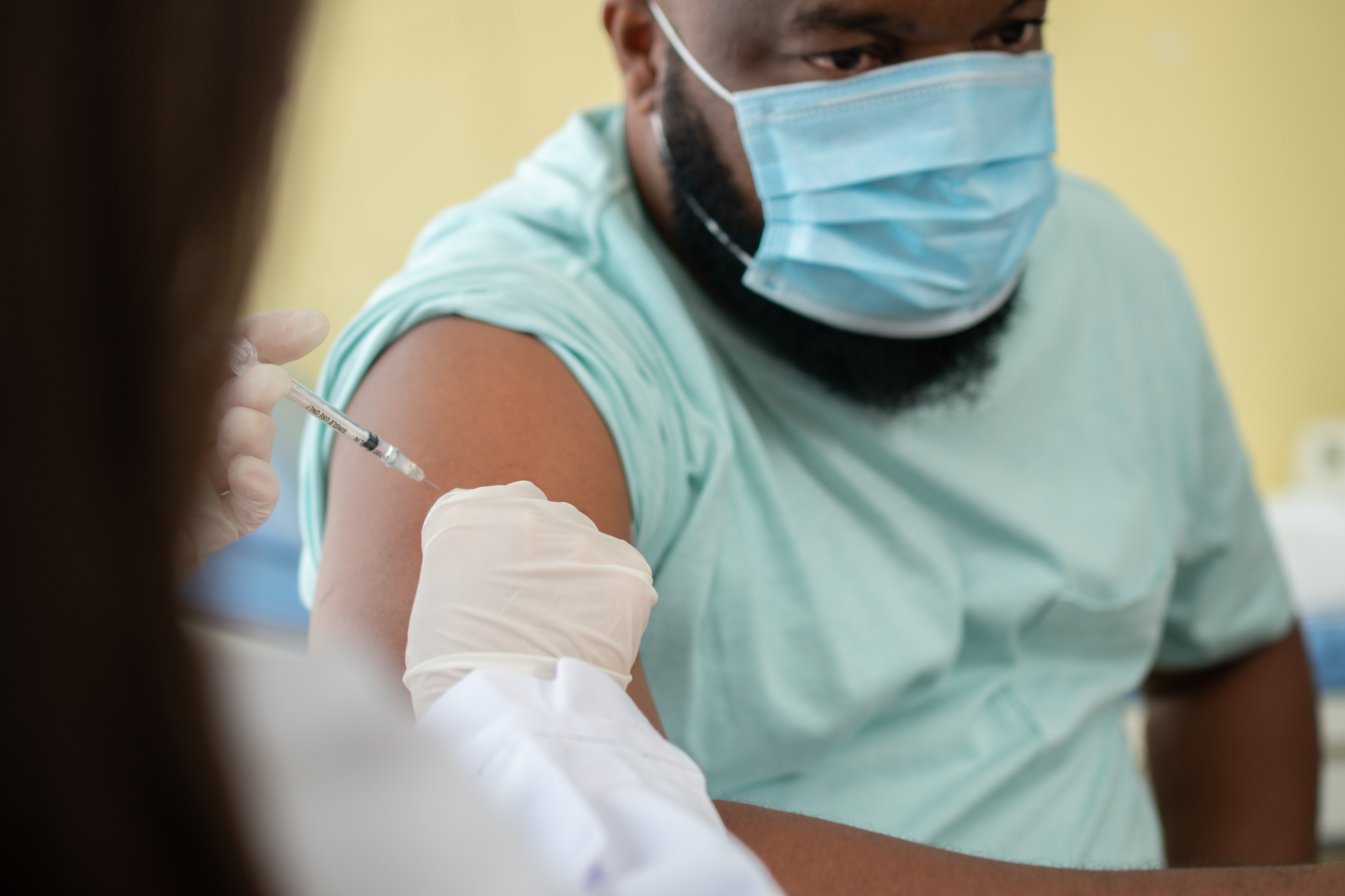Immigrants on the Healthcare Frontlines: A Look at Local Data
Date: April 16, 2020

With pressure mounting on healthcare systems across the United States due to the coronavirus outbreak, it has been the country’s larger population centers that have been especially hard hit. Cities are experiencing or anticipating severe shortages of healthcare workers and in many cases, immigrants are helping to fill those gaps. While immigrants make up 16.4 percent of all workers in the healthcare industry nationally, they make up nearly twice this share in the largest 15 metro areas in the United States. For example, in the current epicenter of coronavirus outbreak, the New York City metropolitan area, 41.8 percent of all healthcare workers—or more than 480,000 healthcare workers—are immigrants.
Figure 1: Immigrant Healthcare Workers in the Largest 15 Metropolitan Areas
| Metropolitan Area | Number of Immigrant Healthcare Workers | Immigrant Share of All Healthcare Workers |
| Miami | 163,433 | 51.0% |
| New York | 480,742 | 41.8% |
| Los Angeles | 233,270 | 40.1% |
| San Francisco | 82,811 | 36.6% |
| Washington, DC | 100,441 | 30.2% |
| Riverside-San Bernadino | 47,363 | 26.4% |
| Houston | 82,854 | 26.3% |
| Boston | 101,723 | 23.4% |
| Seattle | 42,615 | 22.3% |
| Chicago | 105,552 | 21.0% |
| Dallas-Fort Worth | 64,737 | 18.8% |
| Phoenix | 32,362 | 15.0% |
| Philadelphia | 55,128 | 14.4% |
| Atlanta | 41,720 | 13.5% |
| Detroit | 28,636 | 11.6% |
Unfortunately, a shortage of healthcare workers is not new news. Already in 2018, the United States had an average of 12.3 open healthcare jobs per unemployed healthcare worker. For healthcare practitioners — occupations that require higher levels of training and certification, including physicians, surgeons, registered nurses, and specialists — the ratio was even higher, with 27 open healthcare practitioner jobs for each unemployed healthcare practitioner.
We find that across different metro areas, the severity of the shortage varies from moderate to critical. The shortage of healthcare workers is especially pronounced in Atlanta, Boston, Phoenix, Riverside, San Francisco, and Seattle metro areas. In Atlanta and Seattle, there were over 20 open healthcare jobs per unemployed healthcare worker, about twice as many as the national average of 12.3. Similar to the national picture, healthcare practitioners were in high demand with 10 of the 15 largest metro areas having more than 20 open healthcare practitioner jobs for every unemployed healthcare practitioner. Atlanta had the largest shortage with 60.3 open healthcare practitioner jobs per unemployed healthcare practitioner.
Figure 2: Shortage of Healthcare Workers in the Largest 15 Metropolitan Areas
| Metropolitan Area | Ratio of Open Healthcare Jobs to Unemployed Healthcare Worker | Ratio of Open Healthcare Practitioner Jobs to Unemployed Healthcare Practitioner |
| Atlanta | 27.8 | 60.3 |
| Seattle | 21.1 | n.a.* |
| Boston | 18.6 | 41.7 |
| Phoenix | 16.3 | 32.7 |
| San Francisco | 15.3 | 28.2 |
| Riverside-San Bernadino | 15.0 | 26.9 |
| Dallas-Fort Worth | 12.2 | 22.2 |
| Detroit | 12.0 | 33.3 |
| Houston | 9.4 | 21.0 |
| Los Angeles | 8.4 | 17.4 |
| Miami | 8.4 | 17.7 |
| Chicago | 7.6 | 20.6 |
| Philadelphia | 7.6 | 16.4 |
| Washington, DC | 4.7 | 10.8 |
| New York | 3 | 7.9 |
Looking at individual occupations, we see that in almost every one of the largest 15 metro areas, immigrants make up at least 20 percent of the nurses, physicians, and surgeons. The immigrant share of the healthcare workforce is even larger for metro areas on coasts both sides of the country. In Los Angeles, Miami, New York, Riverside, San Francisco, and Washington D.C., over 30 percent of health aides, nurses, physicians, and surgeons were immigrants in 2018.
In New York, the current epicenter of the outbreak, these numbers are even larger, with 69 percent of health aides, 42.5 percent of nurses, 39.8 percent of physicians & surgeons, and 44.1 percent of respiratory therapists being immigrant workers.
Figure 3: Immigrant Share of Select Occupations in the 15 Largest Metros
| Metropolitan Area | Health Aides | Nurses | Physicians and Surgeons | Respiratory Therapists |
| Atlanta | 20.6% | 14.0% | 29.0% | n.a. |
| Boston | 46.3% | 15.8% | 31.7% | n.a. |
| Chicago | 23.3% | 22.8% | 33.8% | 28.9% |
| Dallas-Fort Worth | 23.0% | 21.9% | 31.4% | 18.2% |
| Detroit | 9.2% | 12.0% | 33.6% | n.a. |
| Houston | 25.6% | 30.8% | 46.3% | n.a. |
| Los Angeles | 56.3% | 45.2% | 41.5% | 41.0% |
| Miami | 77.1% | 51.2% | 47.6% | 54.3% |
| New York | 69.0% | 42.5% | 41.5% | 44.1% |
| Philadelphia | 21.5% | 13.6% | 27.1% | n.a. |
| Phoenix | 21.0% | 14.8% | 28.5% | n.a. |
| Riverside-San Bernadino | 32.1% | 32.5% | 43.9% | n.a. |
| San Francisco | 60.1% | 40.0% | 29.5% | n.a. |
| Seattle | 45.0% | 20.3% | 28.7% | n.a. |
| Washington, DC | 46.6% | 32.8% | 34.5% | n.a. |
During an ongoing health crisis, such as Covid-19, the ability to communicate with each patient is crucial — especially in large urban areas with diverse populations. We find that immigrant healthcare workers are especially well-suited to this challenge. We find that the majority of them are bilingual, speaking both English and at least one more language. In the New York metro area, three-fourths of all physicians, surgeons, and respiratory therapists speak more than one language, making them especially able to effectively serve the population around them.
Figure 4: Share of Immigrant Workers that Are Bilingual
| Metropolitan Area | Health Aides | Nurses | Physicians and Surgeons | Respiratory Therapists |
| Atlanta | 49.3% | 59.2% | 62.6% | n.a. |
| Boston | 67.4% | 75.5% | 73.0% | n.a. |
| Chicago | 75.0% | 80.1% | 76.3% | n.a. |
| Dallas-Fort Worth | 68.7% | 77.0% | 76.7% | n.a. |
| Detroit | 64.1% | 71.8% | 82.8% | n.a. |
| Houston | 72.3% | 77.1% | 76.5% | n.a. |
| Los Angeles | 71.1% | 84.4% | 74.8% | n.a. |
| Miami | 47.5% | 66.4% | 79.1% | n.a. |
| New York | 38.9% | 63.2% | 76.9% | 73.5% |
| Philadelphia | 54.4% | 69.9% | 73.7% | n.a. |
| Phoenix | 73.2% | 70.5% | 71.6% | n.a. |
| Riverside-San Bernadino | 71.1% | 79.5% | 77.8% | n.a. |
| San Francisco | 75.1% | 79.9% | 73.1% | n.a. |
| Seattle | 80.6% | 74.1% | 58.6% | n.a. |
| Washington, DC | 71.8% | 68.5% | 79.2% | n.a. |
The fight against Covid-19 has only increased the burden on our healthcare system, increasing the size of these labor shortages, and making our immigrant healthcare workers even more essential to making it through this crisis.






